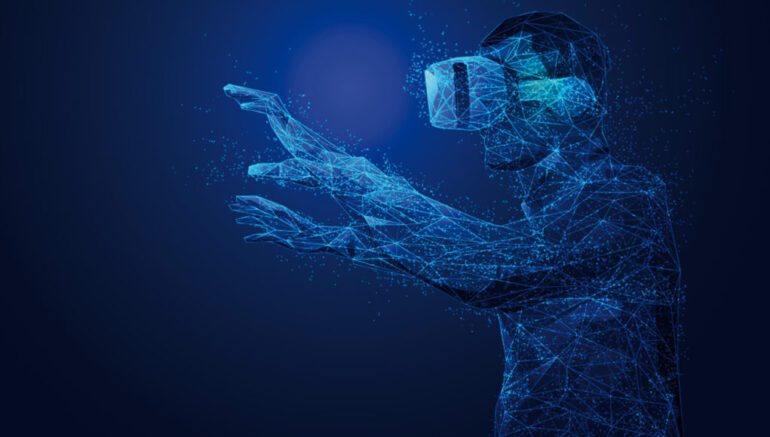TL;DR:
- WiMi Hologram Cloud has unveiled a revolutionary deep learning-based personalized video recommendation system.
- This system encompasses neural network models, feature representation learning, model training, fusion of contextual data, real-time recommendations, and result interpretability.
- It enhances accuracy, personalization, and user experience in video recommendations.
- WiMi’s system can adapt to real-time user behavior and integrates contextual information for more precise recommendations.
- The technology not only combats information overload but also fosters user loyalty and content generation.
- WiMi’s innovation reflects the evolving landscape of personalized content, aligning with the ever-advancing AI and deep learning technologies.
Main AI News:
In a bold stride towards advancing the realm of personalized video recommendations, WiMi Hologram Cloud, a global leader in Hologram Augmented Reality (AR) Technology, has unveiled a cutting-edge system rooted in deep learning. This groundbreaking development aligns seamlessly with the evolving needs of the industry, offering fresh insights and avenues for research in the realm of personalized video recommendations within the deep learning framework.
The technical underpinnings of WiMi’s deep learning-based personalized video recommendation system encompass a multi-faceted approach:
- Neural Network Models: At the heart of deep learning lie the neural network models, the linchpin of personalized video recommendation. Various neural network models, including Convolutional Neural Networks (CNN), Recurrent Neural Networks (RNN), and Long Short Term Memory Networks (LSTM), are employed to model the intricate connections between users and video content. These models excel at executing nonlinear transformations and feature extraction through multiple layers of neuronal units, thereby adeptly uncovering the latent associations concealed within.
- Feature Representation Learning: Effective feature representations are pivotal in personalized video recommendation systems. At the same time, traditional recommendation algorithms demand programmatically modular features, deep learning ushers in the era of automatic feature representation learning. By integrating structures such as embedding layers or convolutional layers into neural networks, user and video features metamorphose into low-dimensional dense vectors, adeptly capturing their interactions.
- Model Training and Optimization: Deep learning models are trained through optimization algorithms like gradient descent, which minimizes prediction errors. For personalized video recommendation, optimization techniques such as stochastic gradient descent (SGD) or Adam are harnessed to fine-tune model parameters. To bolster the model’s generalization prowess and avert overfitting, regularization methods come into play. Additionally, batch training or mini-batch training expedites the model’s learning curve.
- Fusion of Contextual Information: Personalized video recommendations are inherently influenced by contextual factors, such as time, location, and device. Deep learning models are fortified by incorporating contextual data, utilizing an attention mechanism to dynamically recalibrate the weights assigned to user and video features, thereby adapting to current contextual nuances.
- Real-time Recommendation and Online Learning: The exigencies of personalized video recommendation demand real-time responsiveness to user requests, grounded in up-to-the-minute behavioral data. Online learning techniques ensure that the model is in a perpetual state of evolution, adeptly adjusting and optimizing itself in real-time. Incremental training and updating play pivotal roles, enabling the model to remain abreast of the latest user behavioral data.
- Recommendation Result Interpretation and Interpretability: In the realm of personalized video recommendation, the user’s comprehension and interpretability of the recommendation results hold paramount significance. To enhance interpretability, techniques such as the attention mechanism and the inference mechanism are harnessed to elucidate the generative model’s rationale. This empowers users with a deeper understanding of the recommendation basis and rationale, engendering trust and satisfaction.
WiMi’s deep learning-based personalized video recommendation system finds practical application through its recommendation module. Employing deep learning models, this module proficiently models user interests and crafts bespoke video recommendations. In practice, it can synergize with content-based recommendations and social network analysis to further elevate the precision and diversity of personalized video suggestions. User feedback serves as the lodestar for continual optimization and model refinement, ensuring alignment with the ever-evolving interests and needs of users.
This technological marvel by WiMi spearheads a solution to the scourge of information overload, tailoring content to individual preferences, elevating user experiences, and propelling market expansion within the online video industry. With the relentless march of artificial intelligence and deep learning, personalized video recommendation technology can fuse with emerging domains. Augmented learning technology, when combined, refines recommendation strategies through interactive user engagement. Likewise, the fusion of virtual and augmented reality technologies enhances the video viewing experience, making it more immersive. Furthermore, the integration of personalized video recommendation technology with social media and user participation yields a richer user experience. By analyzing user social networks and interactions, the recommendation system aptly suggests videos aligned with their interests, fostering communication and sharing amongst users. This symbiotic model of social interaction and user involvement augments user loyalty, catalyzes content generation, and amplifies word-of-mouth engagement.
Conclusion:
WiMi’s groundbreaking deep learning-based personalized video recommendation system is poised to disrupt the market by offering a highly accurate, personalized, and context-aware video recommendation service. This innovation not only addresses information overload but also enhances user engagement and loyalty. As the online video industry continues to evolve, this technology underscores the potential for AI and deep learning to redefine content consumption and interaction, setting the stage for a more immersive and user-centric digital era.

